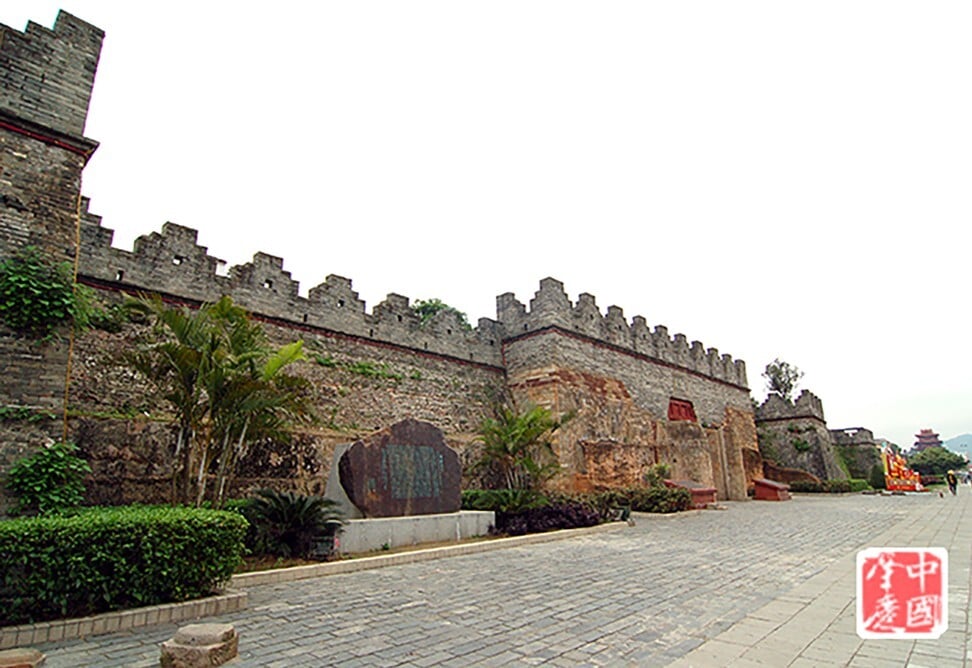
Explainer | Zhaoqing grows tourism dollars on Seven Star Crags, legends of Justice Bao and Jesuit Matteo Ricci
- Seven Star Crags and the legends of Justice Bao, Matteo Ricci are among key attractions that keep tourism dollars flowing in Zhaoqing
- Eco-friendly industries are among five major areas promoted by city officials under its five-year plan through 2020
About 70 per cent of its roughly 15,000 square kilometres area are covered by scenic forests, lakes and rivers, making them a magnet to millions of visitors annually. Zhaoqing made eco-friendly industries among five so-called priority areas of focus under its five-year development plan lasting from 2016 to 2020.
The city, which got its present name during the Song dynasty (960-1279), was home to some of the illustrious names in Chinese history, including the legendary Justice Bao and Italian Jesuit priest Matteo Ricci. Not surprisingly, they became some of the city’s bigger selling points to local and foreign tourists.
Revenue from domestic and international tourism grew 5.1 per cent in 2019 to US$5 billion, according to official data. The government plans to build more hotels and tourist facilities in the next five year to spur the industry, which now represents over 40 per cent of the local economy. It aims to receive 60 million visitors in 2025, up from 45.3 million last year.
Zhaoqing is reachable in two hours from Kowloon in Hong Kong by high-speed train, which has been in operation since July 2019. Below are six top tourist hotspots to consider on your next trip to the city.
1. Seven Star Crags
The Seven Star Crags is surrounded by the Star Lake and is ranked as the top destination in the city by travel website TripAdvisor. The limestone cave complex obtained its name by its appearance that resembles the seven brilliant stars of the Big Dipper. The limestone pillars are said to represent stars that fell from the sky, according to local folklore.
It owes its existence or survival to two top military generals. Marshal Ye Jianying, head of Guangdong province in 1950 a year into the Communist Party rule, protected it from businessmen seeking to convert it into a quarry and mining site.
Ye, who returned to visit Seven Star Crags several times even after he was relocated to Beijing, wrote a poem to express his affection for the picturesque area, whose beauty is said to rival Hangzhou’s West Lake in Zhejiang province, and Guilin in Guangxi autonomous region.
A plaque of “Seven Star Crag” in Chinese, written by Marshal Zhu De when he visited the attraction in 1959, can also be seen at the archway.
2. Dinghu Mountain
Dinghu Mountain and the lake is located about 18km to the east of Zhaoqing city. It is one of four famous mountains in Guangdong province. Called as the “green gem on the Tropic of Cancer”, Dinghu is full of towering trees, waterfalls, birds and flowers.

It has been a top tourist attraction since ancient times and is regarded as a Buddhist sacred place. A complete tour of the site typically requires about five to six hours. People can consider staying overnight near the location, and hotel accommodation costs about 300 yuan (US$44) per night.
3. Panlong Gorge
The gorge scenic is another beautiful attraction in the city, located in the northwest of Deqing county. The area has a long gorge and more than 100 waterfalls to the delight of many shutterbugs.
China’s top tourism magazine, Chinese National Geography, rated the Panlong Gorge as “the most beautiful place in Guangdong province” in 2005. People can go rafting or enjoy a hot spring here.
4. Matteo Ricci
Italian Jesuit Matteo Ricci, who became the first foreigner to enter the Palace in Beijing 400 years ago, introduced western culture, science and religion to the kingdom.
His first home in China was in Zhaoqing, where he lived for six years from 1582 to learn the Chinese language and draw the first modern Chinese map in the city.
There, Ricci also built Xianhuasi, which means “temple of fairy flower”, the first Catholic church in China. The structure was, however, destroyed along the years, with only a plaque to identify its historical significance. Other local museums and churches in Zhaoqing do provide some background commentary on Ricci’s legacy.
5. Ancient Wall and Liqiaolou Tower
Zhaoqing also boasts of a 2,800-metre long ancient wall among its attractions. Built during the Song dynasty in 1113, the wall is by far the oldest monument in the city. Emperor Huizong renamed the city from Duanzhou to Zhaoqing in 1118, which means “the beginning of auspiciousness” in Chinese.

The emperor also built a tower called Liqiaolou as the entrance of the city. Though noted by historians as a weak leader, he was a renowned artist. A plaque written in his unique calligraphy style, known as Slender Gold, hangs today on the tower.
6. Bao Gong Temple (Justice Bao)
The Bao Gong Temple was built to honour Bao Gong (999-1062), a fearless judge who took on the rich and powerful to root out corruption and scandals in high places, and who often dispensed justice for the poor.
His 25 years of civil service during the Song dynasty included three years in Zhaoqing, and his extreme honesty and uprightness as a political leader and judge has been told in many books, documentaries, TV series and movies.

In the early years, the people of Zhaoqing constructed the temple to show their respect for Bao, but it was also destroyed over time. In 2000, the local government built a new temple with a museum there. Lion dances and kung fu shows are some of the activities featured in the Bao Gong Festival, which is celebrated in February every year.

